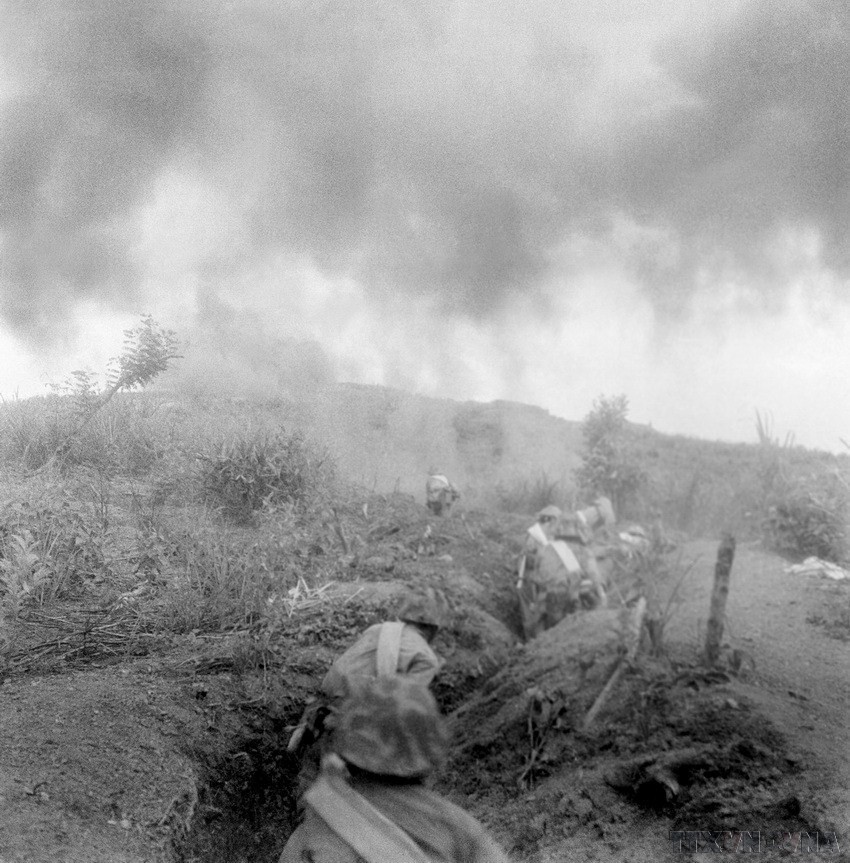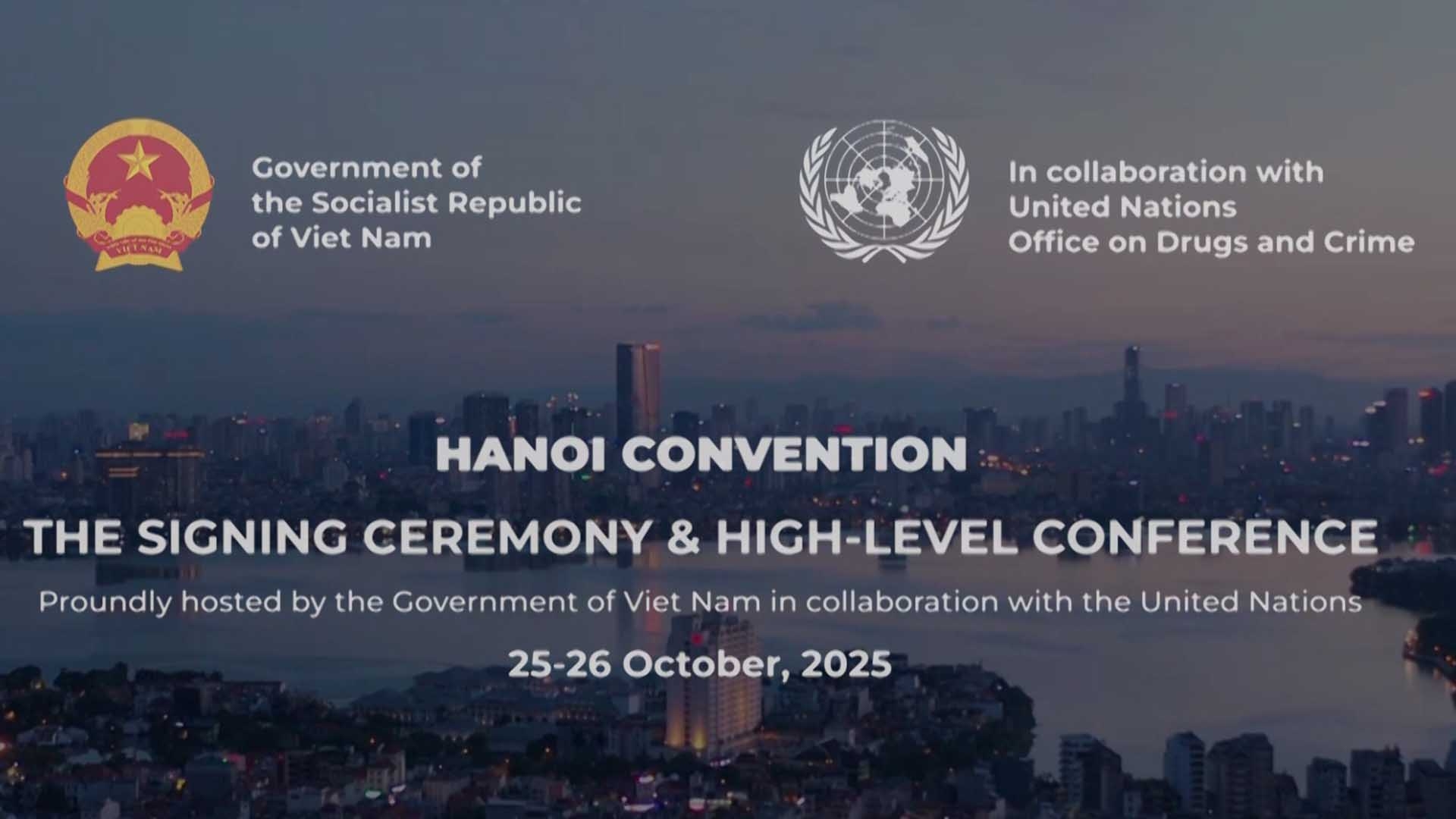
The Dien Bien Phu Victory: A triumph of great national unity
Latest
This was a critical factor in defeating the enemy, securing a decisive victory in the resistance war, and compelling the French colonists to sign the Geneva Accords, thereby restoring peace in Indochina.
 |
| Assault forces attack and destroy the Him Lam stronghold on March 13, 1954. (Photo: VNA) |
A daring and wise decision
After 8 years of resilient resistance, our political and military forces continually grew stronger, altering the balance of power and forces on the battlefield. The Politburo decided to launch the 1953-1954 Winter-Spring offensive campaign, drawing the French mobile forces into the battlefield, thereby creating numerous advantages for their annihilation. Discovering our main force advancing to liberate the Northwest, the French colonists hastily sent troops to Dien Bien Phu, establishing a strong group of fortifications deemed impregnable. Maintaining the initiative, the Politburo decided to launch an offensive campaign to annihilate the enemy at Dien Bien Phu, achieving a decisive victory in the resistance war.
The campaign's command was established after assessing the situation and determining to fight. The command noticed that despite concentrating most of our main forces, armed forces, and local people in the area to fight the enemy, and mobilizing tens of thousands of civilians to serve the campaign, there were still many difficulties, especially with the enemy reinforcing their forces, fortifications, and battlefield positions more robustly. Meanwhile, our troops had limitations in large-scale joint combat operations and the capability to annihilate defensive enemy forces in large strongholds.
With resilient spirit, creative intelligence, and a high determination to defeat the enemy, the command decided to change the combat approach from "quick fight, quick win" to "solid fight, steady advance". This strategy would create superior strength in both infantry and firepower, leveraging the strengths and combat methods of our forces, gradually breaking the enemy's continuous and solid defense lines. The command's bold, wise, and correct decision received high consensus from officials and soldiers across the front.
Unity and coordinated combat
In fighting the enemy, our forces united as one, bravely fought, and closely coordinated between infantry, artillery, anti-aircraft, and engineering troops to annihilate the enemy. Our troops creatively applied various tactics and combat measures, destroying many strongholds and enemy clusters, defeating enemy counter-attacks, tightening the siege, cutting off all enemy reinforcements and supplies, weakening and closely besieging the French forces in the Muong Thanh Valley. Meanwhile, leveraging the spirit of unity and coordinated combat, the military and people of the Northwest intensified attacks, liberating many important areas, cutting off the enemy's supply routes by land and water, facilitating the campaign.
Party committees and governments nationwide united, mobilizing manpower and resources to support the battlefield. Thousands of young people enlisted, tens of thousands of civilian workers joined the fire line, and thousands of tons of food, supplies, and medicines were mobilized for the campaign.
The military and people of Laos and Cambodia, along with Vietnamese volunteer troops, fiercely fought the enemy, dispersing and restraining key mobile strategic forces of the French, supporting the front. Governments and peoples of many countries, especially the Soviet Union and China, wholeheartedly supported our people materially and spiritually. Many international organizations, peace-loving people worldwide, and many French citizens marched in the streets, demanding their government to end the war in Indochina.
With the unity and coordinated combat of the military and people nationwide, and the support and assistance from international friends, after more than 50 days and nights of resilient fighting, our troops launched a general offensive, directly attacking the command center, forcing thousands of enemy soldiers to surrender. The victory at Dien Bien Phu is a great triumph of the strength of national unity, of the military and civilians on the frontline, in resistance base areas, liberated zones, and behind enemy lines, together with the heartfelt help of international friends, creating a combined strength to defeat the enemy. This victory compelled the French colonists to sign the Geneva Accords, restoring peace in Indochina.
The practice of Party building, socio-economic development, national defense consolidation, security maintenance, disaster prevention, and epidemic control in recent times shows that Party committees and governments at all levels have proactively assessed the situation, made wise and correct decisions, achieving consensus and high agreement to win important victories.
Thus, if we are united "in heart and mind, vertically and horizontally seamless", we can succeed in any endeavor. This lesson from the historical victory of Dien Bien Phu needs to be continuously studied, creatively applied in the current national construction and defense.













